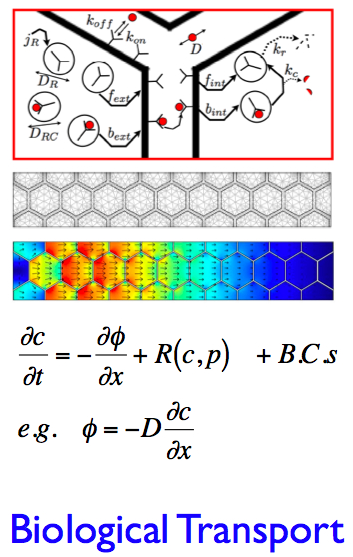Biological transport:
The development and patterning of numerous tissues frequently relies on Fickian diffusion, however patterning also occurs in concert with other physical processes such as cell growth and replication, fluid motion, and gross morphological transformations. To specifically investigate alternatives to simple Fickian diffusion, we develop models that incorporate the convection of cytoplasm/yolk as occurs during early development of the Drosophila syncytium and investigate the impact cytoplasmic movement may have on the specification of gene expression along the anterior/posterior axis.
Left/Right patterning:
Transforming growth factor-b (TGF-b) pathways regulate many cellular processes in human development. Mutations in the TGF-b family members Nodal and Lefty can lead to left-right asymmetry defects during development resulting in situs-inversus (the internal organs are the mirror image of normal humans) or other diseases. Two principle steps establish early left-right patterning in the mouse and other vertebrates. In the mouse, the first step occurs in the node cavity (the node is an embryonic structure that forms a slight depression on the surface of the mouse embryo). At the node, a leftward fluid flow provides the initial symmetry breaking event by either transporting a morphogen or by exerting a mechanical stress that is sensed by cilia on cells lining the node. With a mathematical model for left/right patterning we can understand the physics behind situs-inversus and determine how cells respond to or generate the extracellular fluid flow.
